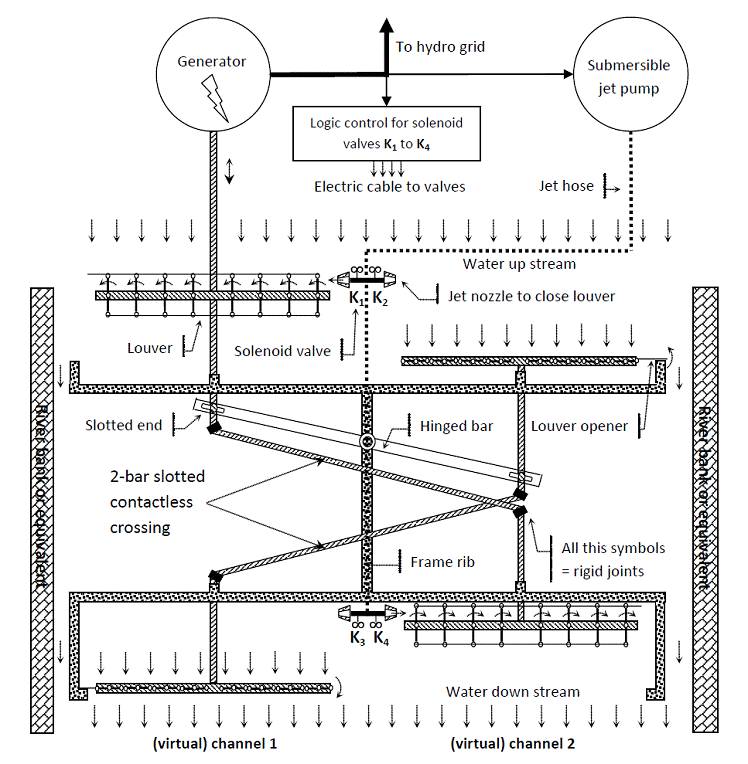|
Kiwaho Laboratory of Energy and Ecology Inc. |
|
We are aiming to power world with clean energy originated from the sun-cooking-earth ! |

River or stream low head hydro generator |
|
|
|
To contact us: |
|
Phone: 613-909-2839 E-mail: admin@kiwaho.com |



|
Why we have to be addictive to rotary turbine for tide or wind energy harvest? Perhaps we are not smart enough to find a new way. Now I propose a rectangular cross section turbine that works in reciprocation mode to harvest energy from any flowing fluid. In a sense, fluid flows in similar way of electric DC (Direct Current), but reciprocal motion of device’s ram behaves in similar way of AC (Alternating Current), thus a DC-AC mechanic inverter is needed. Of course, inverse utilization of same mechanism renders an AC-DC mechanic rectifier, i.e. an exotic pump. The renewable energy is so plentiful, especially a great source of the running water hydrodynamic energy in all rivers and oceans. Nowadays, only high water head resources can be effectively utilized for hydro electricity, but the main resource is of low water head, and never well developed in prior arts, though some experimental tidal turbine projects are under research, such as the Fundy bay tidal energy project in Canada. |
|
Comparison with rotary turbine Obviously the blades of a rotary turbine can only occupy very small percentage of whole circular area, and there is a small angle between fluid force and blade surface so as to induce torque for rotation.
|

